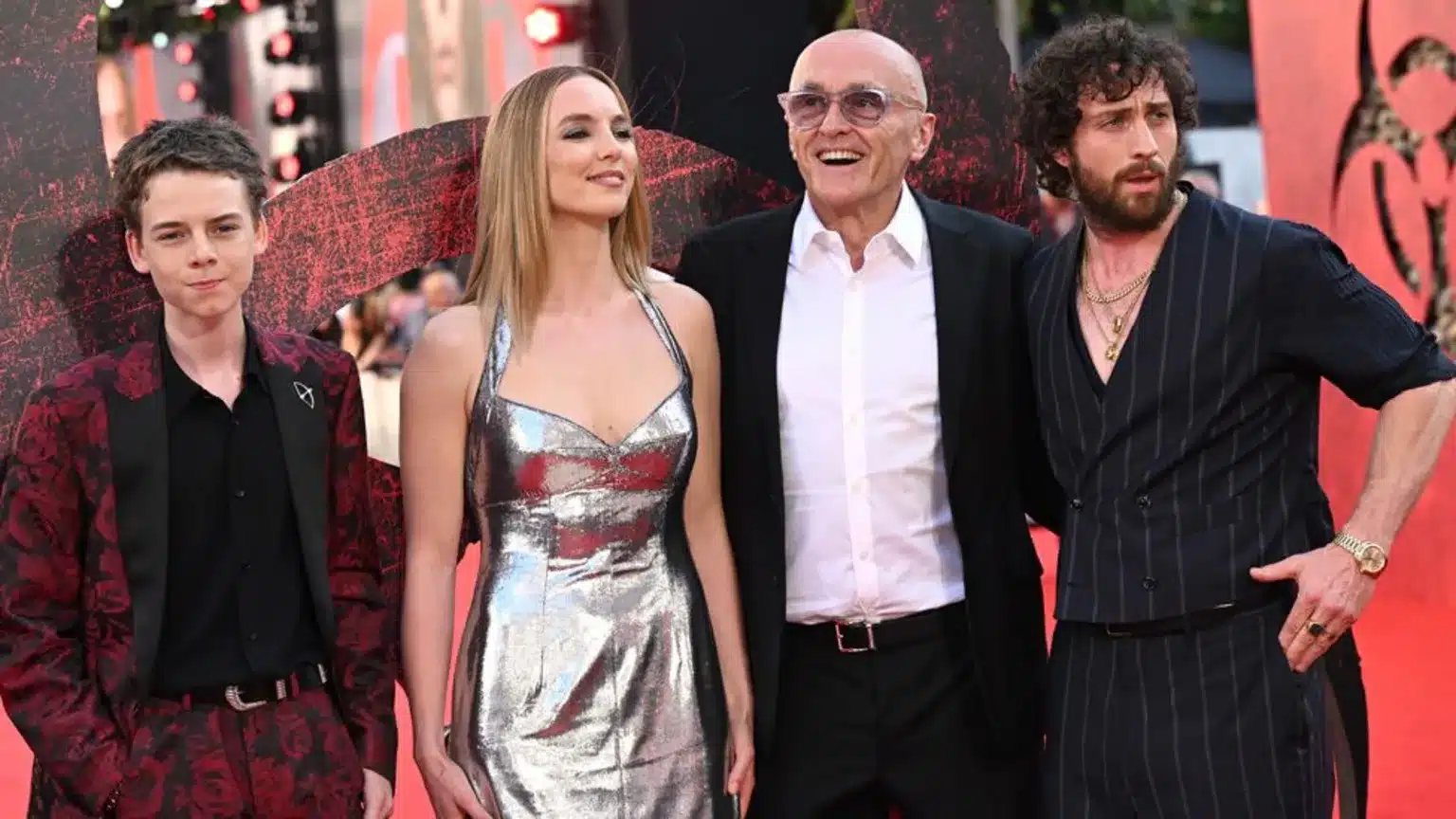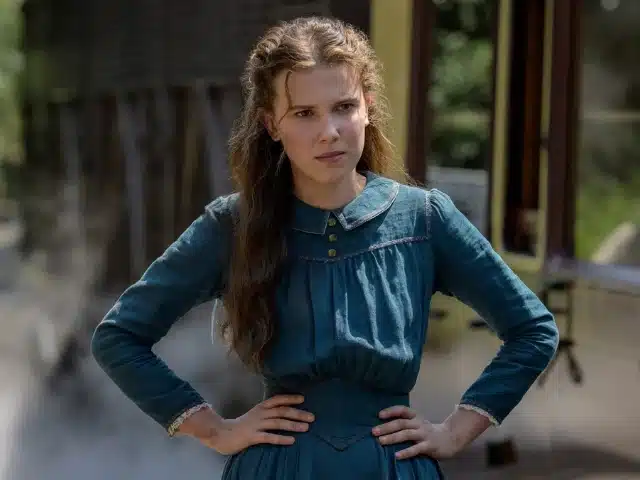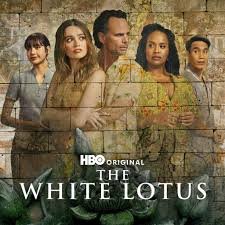The White Lotus – Season 1, Episode 1: “Arrivals”
The inaugural episode of *The White Lotus* begins with a sharp tone of foreboding and dark satire. It introduces viewers to the luxurious yet quietly tense world of the White Lotus resort in Hawaii—a picture-perfect paradise where wealth, class, entitlement, and subtle human dysfunction simmer under a glossy exterior. Created by Mike White, the show opens with the promise of death and then rewinds to reveal the ensemble cast of characters whose interactions, flaws, and personal struggles will build toward something far less tranquil than the setting suggests.
Opening Scene: A Hint of Death
The episode begins in an airport terminal where a grim-faced man named Shane Patton (Jake Lacy) watches a box marked for human remains being loaded onto a plane. A curious couple asks if he stayed at the White Lotus resort, to which Shane responds coldly and unenthusiastically. It’s clear something tragic has happened—someone has died—and the camera cuts ominously to the sparkling ocean, signaling a shift backward in time to when the guests first arrived at the resort.
The Guests Arrive: A Clash of Classes and Egos
The story rewinds to a week earlier. A boat approaches the White Lotus resort, carrying the new group of vacationers. Armond (Murray Bartlett), the resort manager, prepares his staff to greet them with smiles and rehearsed charm, emphasizing the importance of staying invisible and cheerful.
Each group of guests represents a different facet of privilege:
1. Shane and Rachel Patton Shane is a wealthy, entitled newlywed obsessed with his room not being the “correct” one he booked. Rachel (Alexandra Daddario) is a freelance journalist, visibly uncomfortable with Shane’s condescension and his overbearing, status-obsessed attitude. Their honeymoon quickly begins to sour.
2. Nicole Mossbacher and Family Nicole (Connie Britton) is a high-powered CFO traveling with her husband Mark (Steve Zahn), their teenage daughter Olivia (Sydney Sweeney), and her friend Paula (Brittany O’Grady). Nicole exudes corporate confidence and wealth, while Mark is dealing with an undiagnosed health scare. Olivia and Paula, college sophomores, bring a self-righteous, pseudo-intellectual edge to the dynamic. They scoff at the older generation’s obliviousness while benefiting from their privilege.
3. Tanya McQuoid Played by Jennifer Coolidge, Tanya is an eccentric, lonely woman traveling with her mother’s ashes. She’s grieving, unstable, and seeking meaning. Her neediness becomes quickly evident as she seeks out spa manager Belinda (Natasha Rothwell) for emotional support.
Armond and the Staff: The Illusion of Service
Behind the scenes, Armond’s cheery demeanor masks a deeply cynical and exhausted man. He trains a new employee, Lani, who is secretly in labor but too afraid to reveal her condition because she desperately needs the job. Armond instructs her and the rest of the staff to “disappear” in service to the guests, highlighting the stark class divide between those who are served and those who serve.
Later in the episode, Lani ends up going into labor during her shift, and Armond must help her deliver the baby in an employee area—an emergency that shatters his composed mask. This moment sets the tone for the series, exposing how the hospitality world masks real human struggle with curated smiles and floral leis.

Tensions Begin to Brew
While on the surface, nothing explosive happens in this episode, subtle tensions begin to take root:
– Shane’s Obsession with the Room Mix-Up: Shane becomes increasingly obsessed with what he believes is a booking mistake—the room he got wasn’t the “Pineapple Suite” he requested. Armond insists that the suite he has is a better one, but Shane’s petty fixation intensifies. His relentless need for validation through status (and being “right”) starts to grate on Rachel.
– Rachel’s Growing Discomfort:Rachel is already doubting her decision to marry Shane. She’s noticing how her identity is being swallowed by his wealth and his controlling personality. There’s an early suggestion that this honeymoon may not just mark the start of a life together, but the beginning of Rachel’s internal crisis.
– Nicole and Mark’s Marital Tensions:Mark’s paranoia over a possible testicular cancer diagnosis renders him distant and preoccupied. He feels emasculated and overshadowed by Nicole’s success. Meanwhile, Nicole remains focused on maintaining her authority and structure, particularly over her children, who are often aloof or sarcastic.
– Olivia and Paula’s Ambiguity: Olivia and Paula spend much of their time observing and silently judging everyone else. They present themselves as “woke,” reading Frantz Fanon and Nietzsche poolside while still enjoying the privileges of their luxury vacation. Paula, who is not part of the family, seems increasingly uneasy around the Mossbachers, despite her close bond with Olivia.
– Tanya’s Emotional Collapse:Tanya quickly becomes attached to Belinda, unloading her grief and trauma onto her during a massage. Belinda, always professional, is visibly startled and overwhelmed by Tanya’s raw emotional need. Tanya later proposes that Belinda open her own wellness center, with financial help—yet it’s unclear if she’s serious or just caught up in the euphoric high of emotional release.
Themes Emerging from the Water
Thematically, Episode 1 establishes the key undercurrents that drive the show:
– Class Divide and Entitlement:The guests are largely oblivious to the emotional labor of the staff. The resort acts as a stage where the wealthy enact their dramas while those who serve them are expected to remain invisible.
– Colonialism and Appropriation:Set in Hawaii, the show subtly critiques the way tourists “consume” paradise without acknowledging the culture, history, or people native to it. The resort itself is a sanitized version of local culture, curated for wealthy visitors.
– Emotional Disconnection:Everyone in the show seems disconnected—from each other, from their own feelings, and from any broader understanding of their privilege or impact. Tanya seeks meaning, Rachel questions her choices, Armond suppresses his burnout, and Olivia and Paula intellectualize everything to avoid emotion.
– Masks and Performances:Both the guests and the staff are performing roles—happy couple, supportive wife, successful businessman, invisible worker. The metaphor is literalized in Armond’s coaching and in the way Lani hides her labor pains to preserve a job.
A Quiet Prelude to Chaos*
“Arrivals” functions as a slow-burn pilot. It doesn’t rely on fast-paced drama but instead introduces characters with quiet intensity, hinting at the unraveling to come. The dark humor, subtle commentary, and brilliantly drawn character sketches set the tone for the rest of the series.
Though the murder mystery introduced in the opening scene looms in the background, the primary tension is emotional and psychological. It’s about who these people really are, beneath the curated, airbrushed surface of a five-star resort.
Conclusion
By the end of Episode 1, “Arrivals,” viewers are primed for deeper exploration of these characters’ lives. We see the seeds of marital strife, social critique, self-doubt, and slow-brewing disaster. The beautiful setting contrasts jarringly with the characters’ emotional emptiness, making it clear that this will be a vacation to remember—for all the wrong reasons.
In *The White Lotus*, paradise isn’t free—it’s built on silence, labor, wealth, and performance. And with Episode 1, the show begins peeling back the mask.














Post Comment